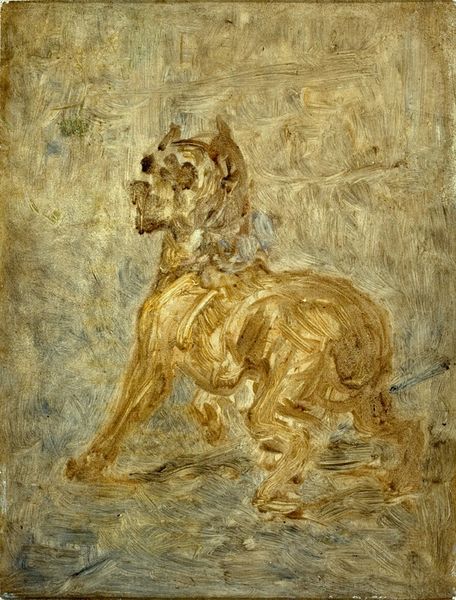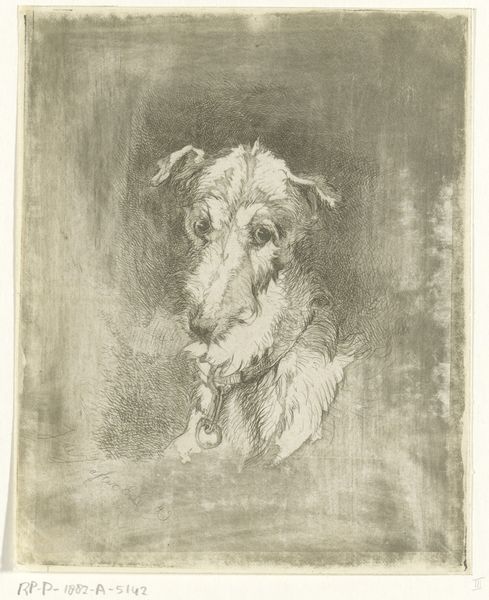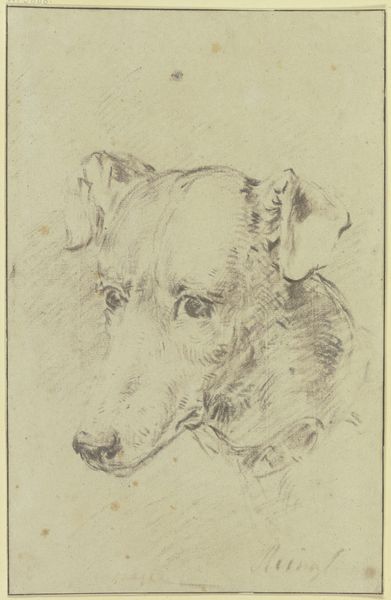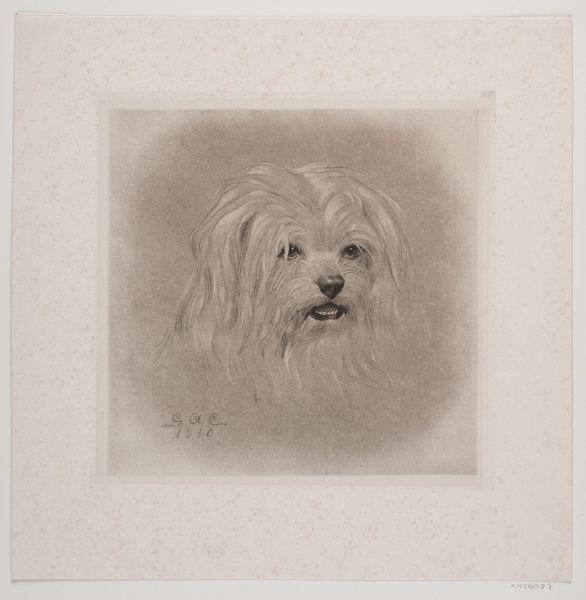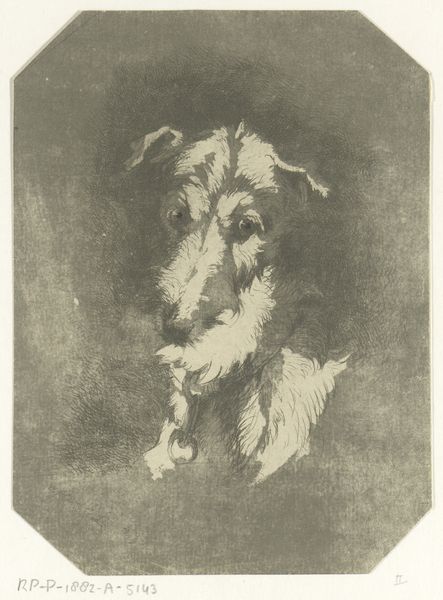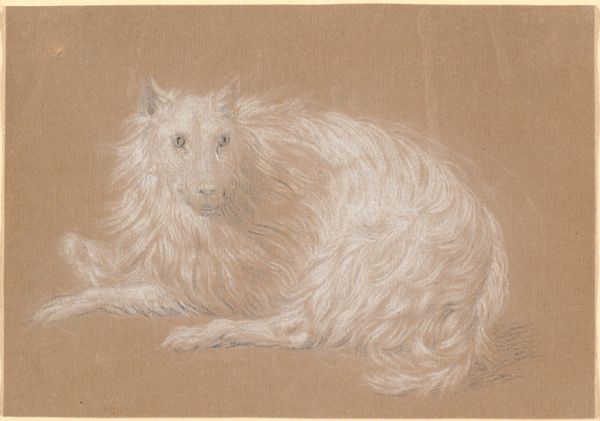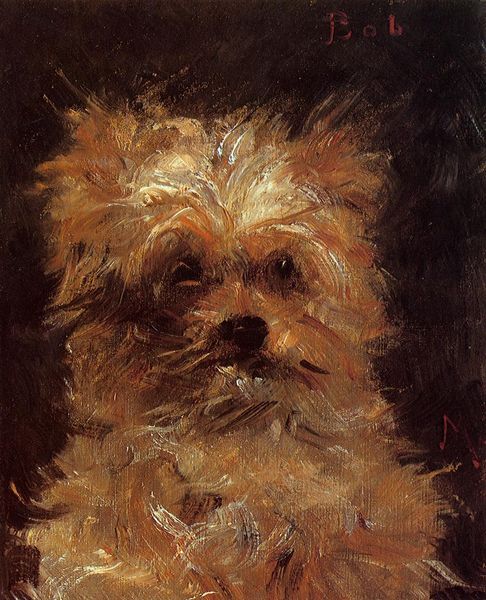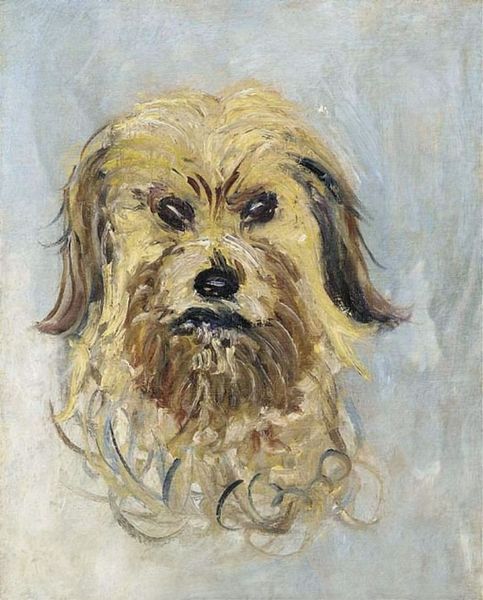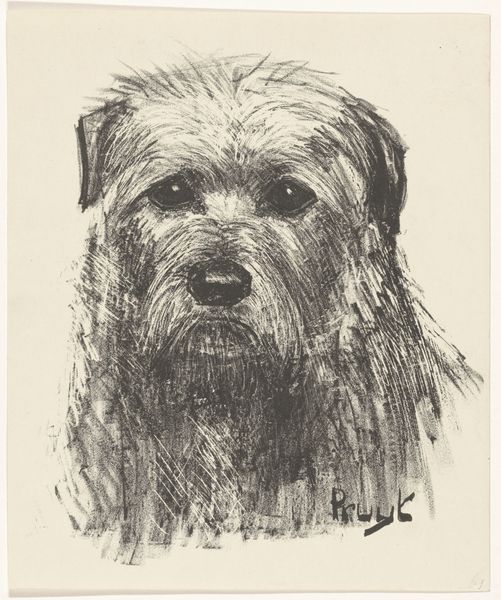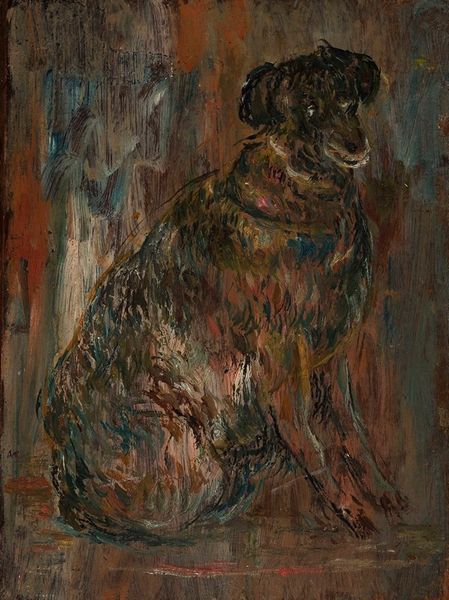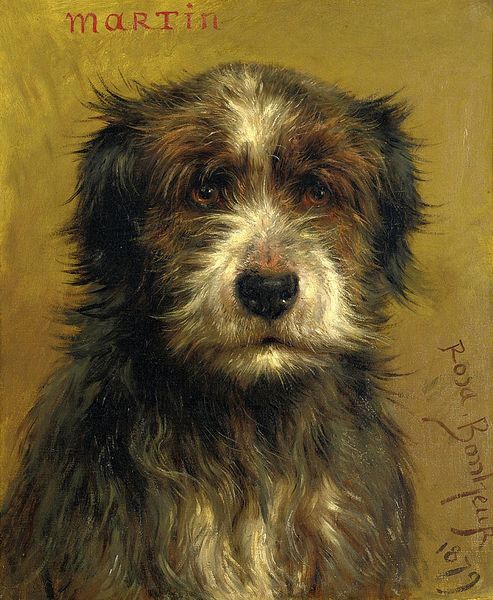
Copyright: Public Domain: Artvee
Editor: Tadeusz Makowski's oil painting, "Dog's Head," created in 1932, is intriguing. The eyes seem almost vacant, and the muted tones create a melancholy atmosphere. What symbolic weight do you think the artist intended to convey through this representation? Curator: It's a powerful image, isn't it? Consider how dogs are often symbols of loyalty and companionship, archetypes of fidelity and unconditional love. But here, those empty eyes seem to betray that established cultural memory. Is this then about *dis*illusionment? Or perhaps about loss? The painting's style itself--reminiscent of expressionism--lends itself to such emotional turbulence. What if we consider it a portrait of anxiety? Editor: Anxiety... I hadn't considered that. The almost mask-like quality of the face definitely supports that interpretation, the dark voids where the eyes should express emotion… perhaps masking a deeper, internal struggle. Curator: Exactly. Think about how masks themselves operate as symbols, both concealing and revealing. In many cultures, masks are used to channel spirits, to embody transformations. What transformations do you see implied here? Is this dog’s head transforming into something…else? Editor: Maybe something human? Or maybe it's stripping away the sentimental ideas we project onto animals. Thank you for sharing that! Curator: My pleasure! Considering the symbolism certainly offers layers of new meaning and feeling to experience here.
Comments
No comments
Be the first to comment and join the conversation on the ultimate creative platform.
